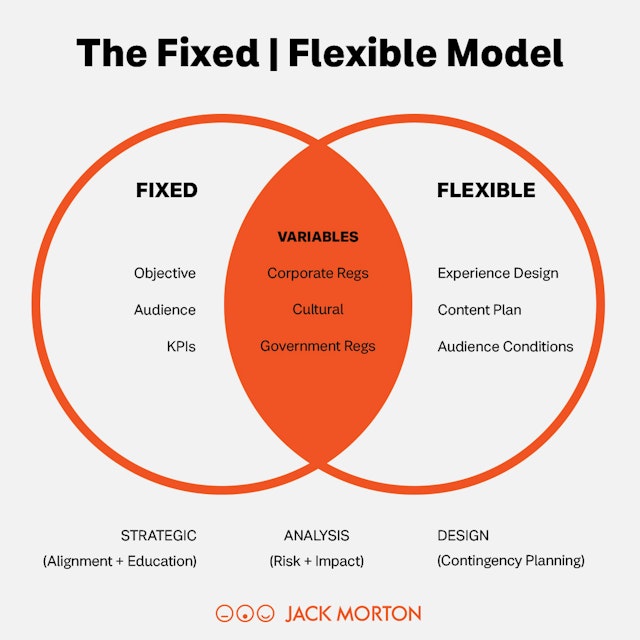Planning experiences under uncertain conditions
Fall of 2021 is around the corner. And when it comes to planning brand experiences, from company town halls and new product launches to customer meetings and conferences, it’s déjà vu all over again. Or maybe it’s not. Things are that uncertain right now.

Jack Morton on how adopting greater agility can work with winning in experiences
With the surge in Covid-19 cases across the United States due to the Delta variant, and some damaging weather in regions that tend to be popular for corporate get-togethers such as Florida, Texas and Louisiana, many marketers are unsure how to plan. Should we shift our experiences back to virtual? Are smaller in-person gatherings the way to go? Do we lean into all live and require vaccinations or testing?
Before going all-in or trying to decide what to do, marketers need first to ask themselves why they are planning an experience for the fall, and then look at their overall experience strategy through a framework that enables them to move forward in a way that advances the conversation while mitigating risk.
According to Mark Pollard, author of Strategy Is Your Words, strategy is “an informed opinion about how to win”. If winning is sharing information with a group of people and moving them to some action on behalf of a business, then adopting a fixed and flexible planning model might be the way to go.
What is the Fixed/Flexible Model?
When planning an experience, we never know everything, but we always know something. The Fixed/Flexible Model is a simple framework that allows us to begin planning experiences with the stuff we know, structuring the things we don’t into meaningful buckets, and monitoring certain variables to specific milestones that will help us move forward.
Here are a few examples:
A corporate client wants to roll out a new vision for the organization. The vision is part of an overall strategic priority that focuses on improving and modernizing organizational culture. What we know – what’s fixed – is that the company will have a new vision, identity and position in the market starting in November. We also know that all employees, especially client-facing ones, need to get the story straight to reassure and reinvigorate existing clients while looking for new ones. And we know that building knowledge and engagement of employees is crucial to the launch’s success.
The objective, audience, date and the expected outcome are all things we know, so they are fixed. The format for the experience is what we don’t know, so it’s flexible. Will it be live, virtual or a combination of both? We also don’t know what media we’ll use since the format will determine the mix of pre-recorded, live video or stage presentations and breakouts. Those things are also flexible.
The variables are a mash-up of government regulations, corporate guidance and requirements, and cultural implications specific to each organization. Is it part of the corporate culture to be a leader in taking risks, or is prudence a valued trait? We must revisit these variables on a set schedule that also considers the changing conditions and deadlines for hotel contracts, equipment reservations and availability, and other production lead times and demands.
Ideally, we move everything flexible to the fixed side by four weeks (or six, if necessary) before the experience, give or take.

This is only one example of planning brand experiences in uncertainty. It’s not unique right now. Nor is it going away. One chief executive officer needs a strategic alignment meeting in early January with his global leadership team. An industrial tech giant needs to recognize and share innovations across five major business areas with clients and prospects. And a major pharmaceutical company that is receiving approval for a new therapy needs to launch it to the market on the heels of the approval date, but is still on the fence about whether it’s going to have its salespeople attend in person or not.
Experience strategy is never a simple exercise, and uncertain conditions complicate things. That’s why it’s essential to adopt an agile approach, like the Fixed/Flexible Model – one that’s simple, easy to use, understand and communicate as we look to develop an informed opinion on how to win in experiences. Because right now, choosing how we plan an experience might be the only certainty we get.
Content by The Drum Network member:

Jack Morton
No one sets out to be average. No one aspires to be ordinary. Jack Morton is an award-winning global brand experience agency that exists to reimagine what an experience...
Find out more
